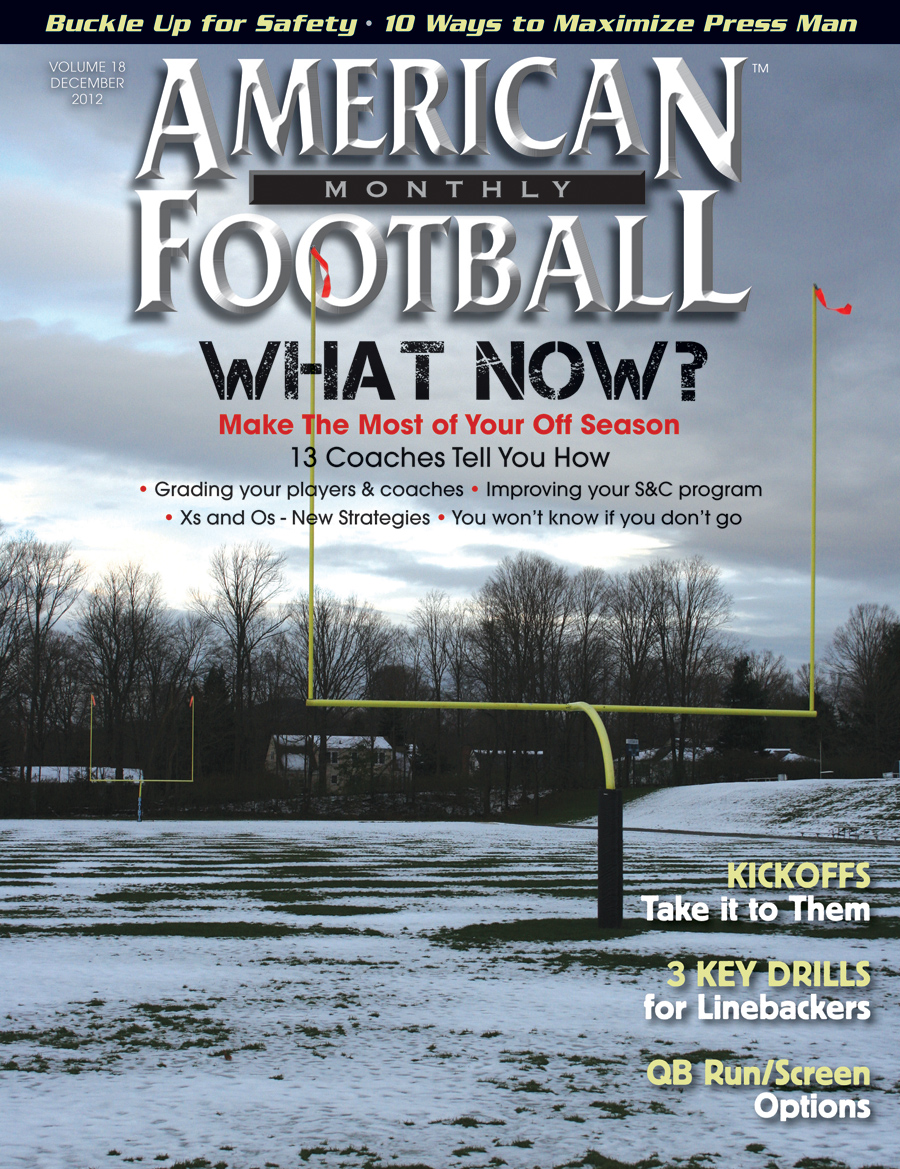Article CategoriesAFM Magazine
|
LINEBACKER TACKLING DRILLS AND TECHNIQUESby: Shane RichardsonDefensive Coordinator • University of North Carolina-Pembroke © More from this issue One of our defensive coaching guidelines is that we will get what we demand or allow. If we do not emphasize what we think is important to our defense or if we do not hold our players accountable for what our expectations are, then we are held responsible for the lack of production on the field. This definitely applies to tackling. We demand to be 90% efficient in all tackling opportunities and we do not want to allow poor practice habits or a lack of emphasis on the right things to adversely affect that. We feel that we must put our players into realistic situations, as much as possible, to train those movements and techniques that will be useful in performing sound, sure tackles when it counts.
|
|
|||||||
| HOME |
MAGAZINE |
SUBSCRIBE | ONLINE COLUMNISTS | COACHING VIDEOS |
Copyright 2025, AmericanFootballMonthly.com
All Rights Reserved





